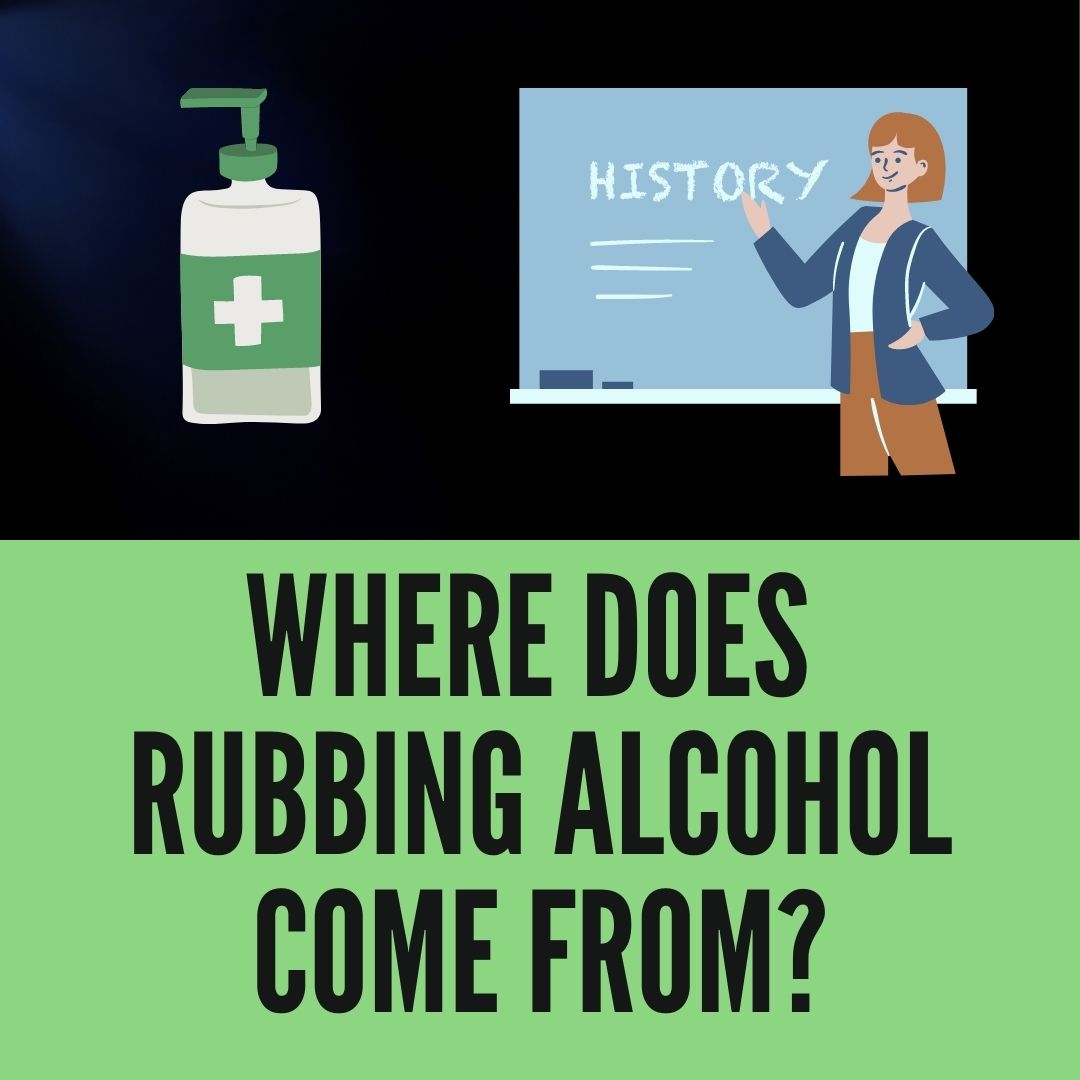
If you have ever been generous to clean or disinfect your house, you may know about Rubbing Alcohol. And if not that way, hand sanitizers should definitely have introduced Rubbing Alcohol to you.
But ever wondered, where does Rubbing Alcohol come from? Come let’s learn:
What is Rubbing Alcohol made from?
Rubbing Alcohol is a Chemical compound and a common member of the Alcohol family. You can get it from any drug store or even a departmental store for household usage.
However, in reality, before coming to the marketplace, the production of Rubbing Alcohol goes a long way.
The process includes synthesizing the reaction of propylene with sulfuric acid and hydrolysis. Or in other cases, developers carry out the Hydration of propylene using a catalyst and Water under very high pressure.
The Science behind the existence of Rubbing Alcohol
For producing Isopropyl (Rubbing Alcohol), the most basic yet necessary material is Propane. It is basically an unsaturated organic compound extracted from petroleum, natural gas, coal, and other fossil fuels.
During the process of oil refining, when these fossil fuels break down into different substances, one of their by-products is Propane. Though, what exactly extracts Propene from the other substances is a certain level of heat.
Now because Rubbing Alcohol is a mix of Propene and Water, the next step is Hydration. It is where Water and Propene combine to form a new chemical bond known as Isopropyl Alcohol (C3H7OH).
It is a compilation of Propane (carbon and hydrogen (C3H6)) along with Water (hydrogen and Oxygen (H20)).
The process of Hydration can be both Direct or Indirect.
For instance, the Direct Hydration process combines Propane and Water in either liquid or gaseous form. This process is advanced and thus requires a solid acidic catalyst that can help in inducing the reaction.
In contrast, the indirect method involves a different process. In this process, developers take Propane and initially mix it with sulfuric acid within an apparatus which is also known as an absorber.
This reaction further produces sulfate esters. The process then includes mixing sulfate esters with water and then running it down through hydrolyzers. It then involves complex molecules and water to finally create Isopropyl Alcohol.
Lastly, final refining is necessary even after both Direct and Indirect processes; the result includes Alcohol, Water, and other compounds. Here using the Distillation process, To extract the purest composition of Rubbing Alcohol.
Where does the term Rubbing Alcohol come from?
The term Rubbing Alcohol came into existence during the mid of 1920s. It first came into prominence in North America. The term ‘Rubbing’ would literally mean that this
Alcohol is not meant for Consumption. However, in most of the British part of the world, Rubbing Alcohol is still commonly known as Surgical Spirit.
Bonus Information: Muhammad ibn Zakariya al-Razi, an ancient Persian physician, was the inventor of Rubbing Alcohol. From 864 to 930 AD, he discovered Isopropyl along with Sulphuric Acid. Since then, this solvent has been in existence and has regular personal and commercial usage.
What is the Isopropyl Alcohol chemical formula?
What is Rubbing Alcohol chemical formula? Every bottle of Isopropyl Alcohol can be Rubbing Alcohol but not vice-versa. Rubbing Alcohol contains two subcategories, Isopropyl and Ethyl.
Both of these sub-solvents are made from different things and contain a different set of additives. That is why even their Chemical formula also is different.
Rubbing Alcohol Chemical Formula: C3H8O
Isopropyl Alcohol Chemical Formula: C3H7OH or C3H8O
Ethyl Alcohol Chemical Formula: C2H5OH
How do you make homemade Rubbing Alcohol?
Making Rubbing Alcohol at home is not possible, but you can definitely produce its substitute.
The homemade solvent might not work at par (Especially for medicinal usage) with Rubbing Alcohol, but neither will it disappoint.
Here is the step-by-step procedure for making a Rubbing Alcohol substitute at home:
Things you will need:
- 1 packet of Yeast (Nearly 3 tablespoons of Yeast)
- Half kg of Sugar
- 2 liters of Distilled Water
- An Airlock
- A vessel
- A fermentation vessel.
Procedure:
- Inside the Vessel (Pot), add 2 liters of Distilled Water and keep it boiling.
- Now start adding sugar slowly and pour it all, ensuring every bit of it dissolves. Due to impurities in sugar, the solution might look a little cloudy, though it is completely fine.
Note: During the sugar mixing process, make sure the water does not reduce to a surprising level.
- Further, off the gas and keep the sugar water solution for cooling down.
- Once the solution is completely cool, transfer it to the fermentation vessel.
- Now prepare Yeast by following the method given with that particular yeast packet/ box. Allow sitting Yeast for 15 minutes.
- Once the yeast is ready, pour it into the fermentation vessel. Use a stick and mix the solution nicely.
- Now put the Airlock on the top of the fermentation vessel. Make sure you fill it with the amount of required water. It will help in creating an oxygen-less environment for the yeast solution underneath. Remember, even a pinch of Oxygen will fail to produce Alcohol.
- The process of Alcohol making may take anywhere from 2 weeks to 4 weeks.
- After that, add a clearing agent, and the solution will look clear, pretty free from all the cloudy mix it had earlier.
- In the end, use a brewing meter and check the solution’s Alcohol percentage.
NOTE: This might not be the best way of producing Rubbing Alcohol at home, but it still has possibilities for success.
Is Rubbing Alcohol made from petroleum?
Is Isopropyl Alcohol made from crude oil? Yes, Rubbing Alcohol is a by-product of Oil Refining, be it petroleum or crude oil.
Though for reaching up to the ultimate Isopropyl stage, this by-product has to undergo different procedures of refining and distillation.
Is Isopropyl Alcohol a natural product?
Isopropyl Alcohol, or any other Alcohol for that matter, is definitely natural produce. It is made up of two components Propane (a by-product of fossil fuel) and Water (the most naturally occurring substance).
However, being natural does not mean that it is free from toxicity and chemical substances. Rubbing Alcohol is a highly toxic chemical solvent that, if used abruptly, can cause fire, injury, and internal organ damage.
Wrapping up…
We hope that you now have a clear idea of Rubbing Alcohol and its making by the end of this discussion.
We have tried including both scientific and regular explanations so that our readers can go through the entire process easier.

My name is Logan, and I’m a 36-year-old dad who owns a small pressure-washing company in the suburbs of Atlanta, Georgia. My main goal with rubbing-alcohol.com is to show you how versatile isopropyl rubbing alcohol can be! I hope. You find it useful.
